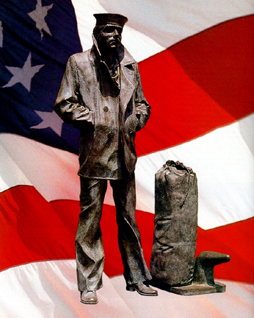LIPPINCOTT-JAMES
JAMES B. LIPPINCOTT

YN

James B. Lippincott was born in Philadelphia about 1835/6. His occupation was given as a carpenter. At age 21, he was 5'1 tall with hazel eyes and dark hair. He had grown to 5'6 by age 24.
Washington D.C., Times-Herald / September 16, 1950 OLDEST NAVY MAN WILL BE HONORED
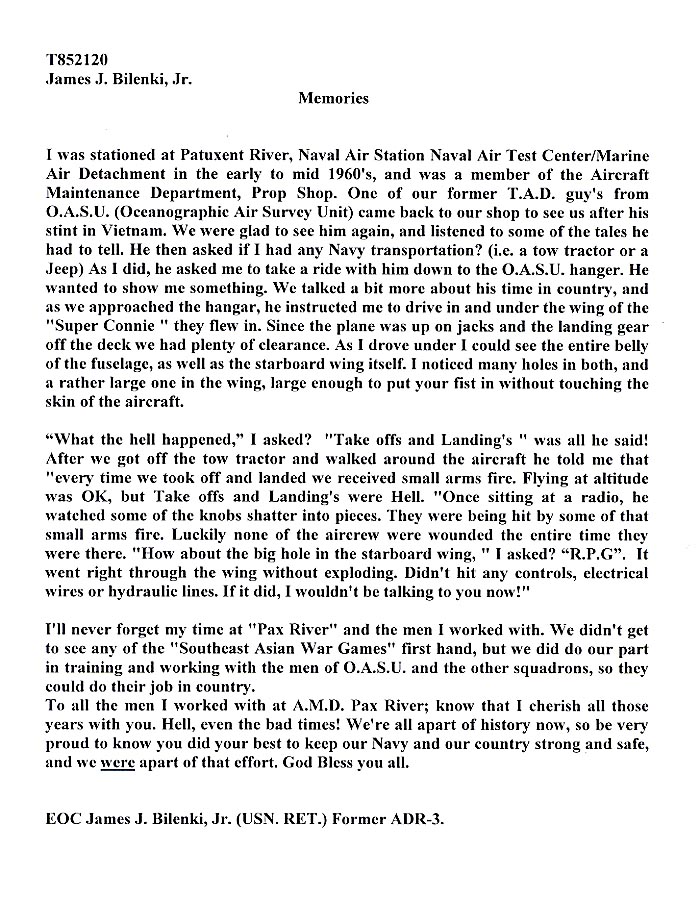 852341
852341 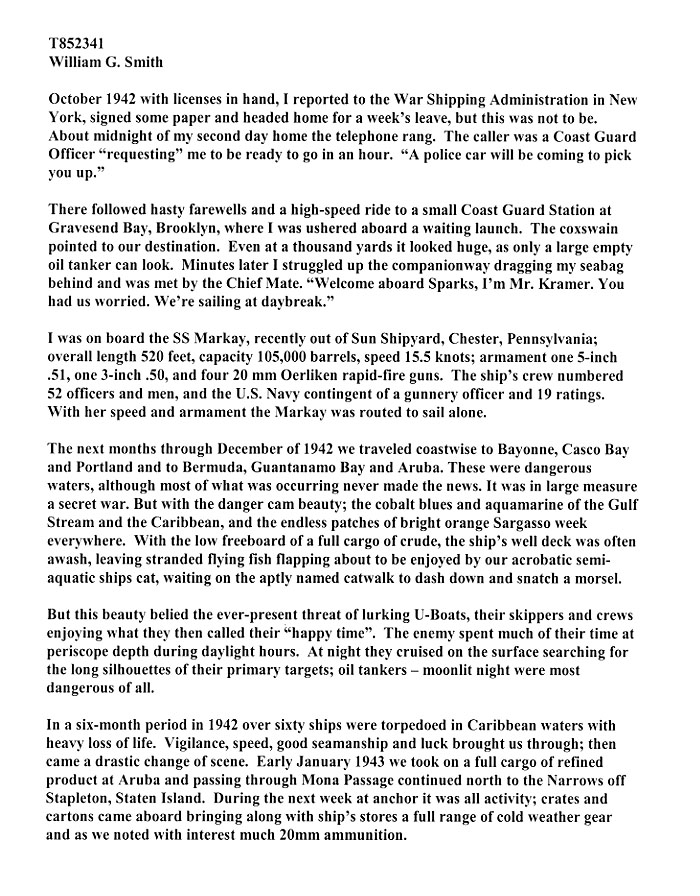
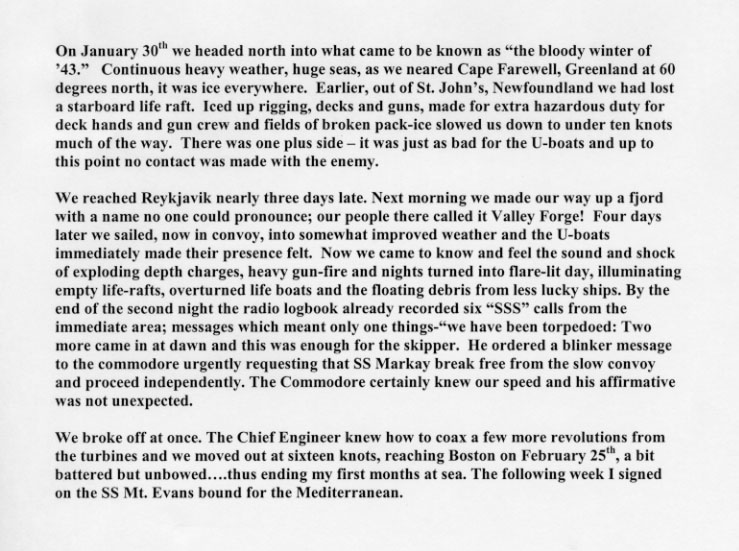 852519
852519 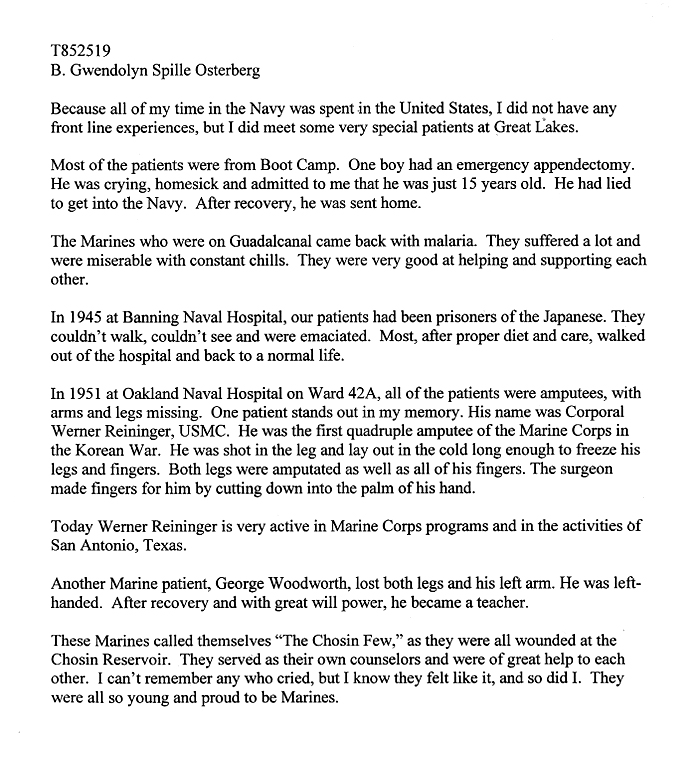 852543
852543 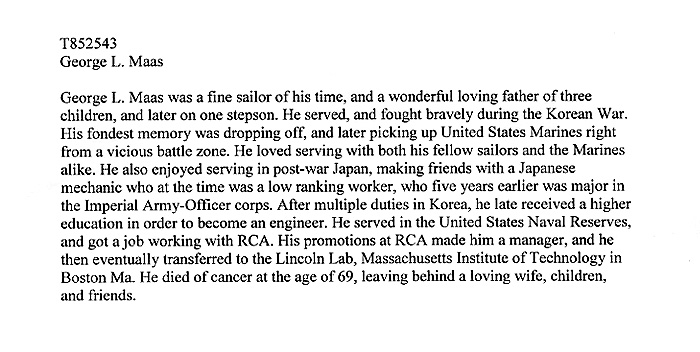 852678
852678 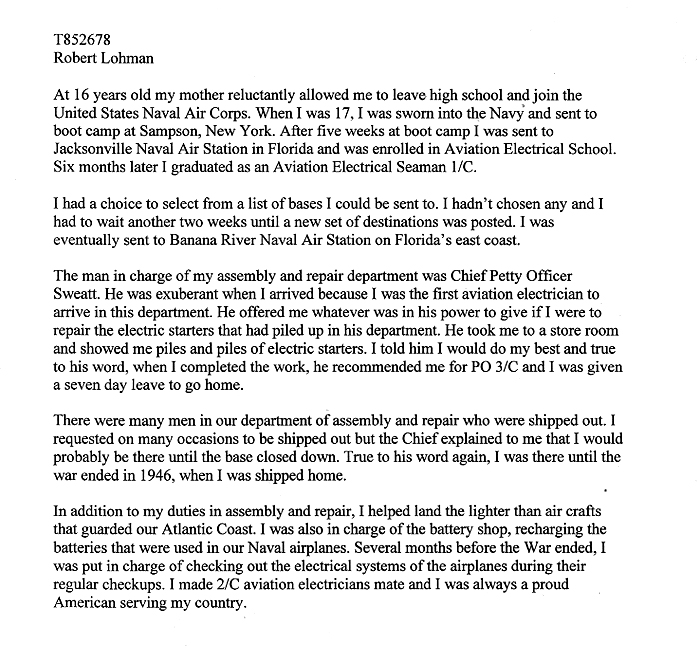 852727
852727 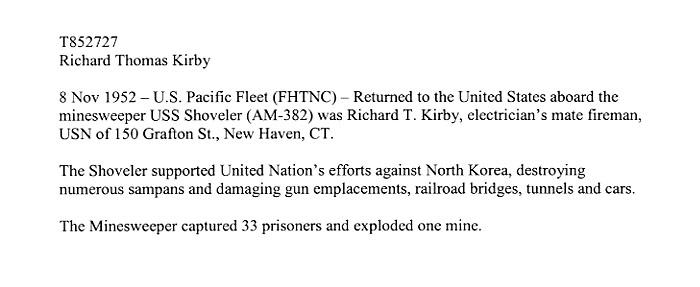 852776
852776 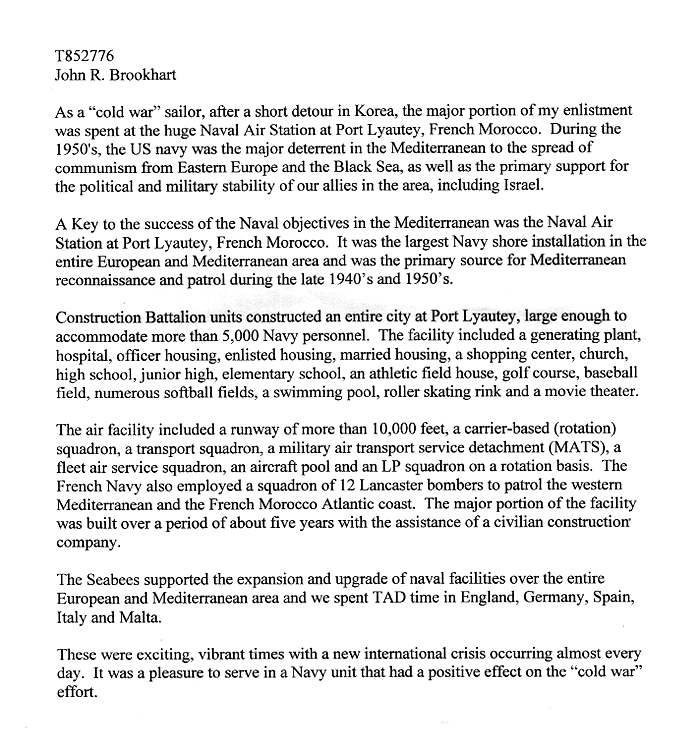 852920
852920
BATTLE OF MIDWAY HERO
The Battle of Midway is considered by many naval historians to be the most important naval battle of the Pacific Campaign during World War II. The battle occurred between June 4th and 7th, 1942. Both the U.S. and Japanese navies suffered significant losses but the damage inflicted to the Japanese fleet was so great that it would not recover during the remainder of the war. The Japanese sought to eliminate the U.S. fleet by luring their aircraft carriers into a trap but unknown to the Japanese, the Americans were intercepting and decoding their messages giving the U.S. knowledge of the Japanese plans. Although one U.S. aircraft carrier and one destroyer were sunk during the battle, the Japanese lost four carriers and a heavy cruiser. More importantly, they lost a reported 248 carrier aircraft, and more than 100 trained and experienced naval pilots. Perhaps more devastating was the loss of trained mechanics and aircraft ground crews who went down with the ships. The defeat at Midway derailed the Japanese offensive in the Pacific, preventing them from following their plans to invade significant areas in the Pacific. Scouts found the Japanese fleet early in the morning of June 4. At 0630, the Japanese launched a large number of carrier bombers and torpedo planes supported by fighters to attack Midway Island unaware of the presence of U.S. naval forces. Despite the strength of the attack, there was little significant damage on Midway. Then, between 0930 and 1030, American Douglas torpedo bombers attacked the Japanese carriers. This attack failed. Although they were almost all shot down, by pulling fighters away from the main Japanese fleet, other American dive bombers were able to fatally damage two of the Japanese carriers. Later in the afternoon a mixed squadron of American bombers destroyed a third carrier. Bombers from the USS Yorktown were then able to bomb and totally wreck a fourth carrier.
On the fateful morning of June 4, 1942, LT Charles Rollins Ware, a squadron leader, was the pilot of a Douglas SBD Dauntless dive bomber of Scouting Squadron 6 (VS-6) that flew from the USS Yorktown. The planes launched at an extreme distance from the Japanese and not all details of the launch went smoothly. A command decision was made that it was not practical for all elements of the strike force to assemble fully and as American squadrons were launched piecemeal they proceeded toward the target in several different groups. Some flights had difficulty locating their target as some planes proceeded at wrong headings. Upon arrival of LT Ware’s flight over the Japanese, their carriers were being attacked by American torpedo bombers. Unfortunately, only one plane from VS-6 returned from the battle. Years later, in an interview of the surviving pilot, he described the VS-6 attack and the following are excerpts from the interview:
“We anticipated a Japanese combat air patrol at 12,000 but we found they were concentrating their efforts between 0-500 feet when we made our bombing dive. When I finished I was very alone but soon saw LT Ware’s division was starting to form, his first section already together and defending. The second section, consisting of myself and two SBDs joining on me, slid to the outside of Ware’s evasive turns. We then had six SBDs in formation. When a Japanese fighter committed himself to an attack, twelve .30 caliber free gun mounts in our aft cockpits were able to fire on each fighter as he came within range. The tracer display was very impressive as well as effective in Zero casualties. The fighter attacks remained singular, varying from right to left. I have often wondered what our luck would have been if the Japs had made simultaneous attacks at our limited air speed (115 kts). I truly believe that the situation would have been reversed. Fuel and ammunition became critical. Our new tactic of staying close to the water denied the Zero his deadly capability of pressing his attack under the unprotected belly of the SBD. The Zero’s were breaking off their runs much earlier and their shot pattern was dropping in the water underneath us. The word was passed, ‘Conserve Fuel, Conserve Ammo’ but this was perhaps ridiculous as some had already run out of both. One thing was certain, that not all were going to make it back. The Zero attacks finally became intermittent and we climbed to 1200 feet, reduced power settings and throwing things overboard to reduce our weight, including guns that were out of ammo. Then came another Zero attack so we went back to our old evasive tactics, turning into the attack with a delayed slideover of the second section, now at 95-100 kts. Within a few minutes one of our flight ran out of fuel and had to make a beautiful water landing. The second Zero attack lasted about 20-30 minutes and all of a sudden there were no Japs. Leading his division against two long fighter attacks after a major bombing engagement took a good 4.5 hours from launch and was well beyond the expectancies of the capabilities of the SBD and, more important, the people trained in them. LT Ware, on his last encounter and his last flight, did one of the most remarkable jobs of flying under all known combat problems. He accomplished some very venerate tasks in the last flight of his life, which were graciously relayed many times back throughout the training squadrons to benefit the new pilots coming up. His flight smoothness as a division leader allowed airplanes and crews to fly and fire as a group, his consideration of the fuel problem let the group hang together longer and, most important, the classic agility he would instinctively fall into with a turn at precisely the right time set up his six planes for a grandstand shot at an attacking fighter, one of the greatest effectiveness. After our last engagement LT Ware took a heading that I thought was wrong. I hand signaled to him that I was changing course but all the others stayed with Lt Ware and I was the only one to find our fleet. The rest flew off into the vast Pacific and were not heard from again.”
LT Charles Rollins Ware was born on March 11, 1911, in Knoxville, Tennessee, and joined the Navy in 1929. In 1930 he was appointed to the Naval Academy, graduating in 1934. After service at sea he became a naval aviator. He was posthumously awarded the Navy Cross for his heroism in pressing home his attack on the Japanese fleet. In 1945 the USS CHARLES R. WARE (DD-865) was commissioned in his honor and she served from 1945 to 1974.
Submitted by CDR Roy A. Mosteller, USNR (Ret)
853099
Michael Richard Hall
AWARDS AND CITATIONS
Navy Cross
Awarded for actions during the Vietnam War
The President of the United States of America takes pleasure in presenting the Navy Cross to Lieutenant Commander Michael Richard Hall (NSN: 0-628949), United States Navy, for extraordinary heroism on 24 February 1968 as a Bombardier/Navigator in Attack Squadron SEVENTY-FIVE (VA-75), embarked in U.S.S. KITTY HAWK (CVA-63), and launched from U.S.S. ENTERPRISE (CVA(N)-65) in a joint attack with Attack Squadron THIRTY-FIVE. Lieutenant Commander Hall participated in a coordinated, night, low-level strike against the heavily defended port facilities within the city of Hanoi, North Vietnam. Soon after launching, serious systems difficulties developed in his aircraft. Through the professionalism and determination of Lieutenant Commander Hall and his pilot, this discrepancy was overcome and they rejoined the flight to continue the attack. En route to, and in the target area, extremely heavy and accurate anti-aircraft fire was encountered and the aircraft received a hit in the left wing. Notwithstanding this battle damage, Lieutenant Commander Hall aggressively navigated his aircraft to the target through multiple surface-to-air missile attacks which were successfully evaded through extremely low-altitude maneuvering. He then delivered his ordnance directly on the target. During egress from the target area, he again came under an intense attack from surface-to-air missiles and was forced to maneuver violently at very low altitude. One missile was seen to explode aft and below his aircraft, buffeting it violently. By his daring action, exceptional skill, and loyal devotion to duty in the face of intense enemy opposition, Lieutenant Commander Hall upheld the highest traditions of the United States Naval Service.
General Orders: Authority: Navy Department Board of Decorations and Medals
Action Date: 24-Feb-68
Service: Navy
Rank: Lieutenant Commander
Company: Attack Squadron 75 (VA-75)
Division: U.S.S. Kitty Hawk (CVA-63)
Submitted by Doug Bewall RMCM USN Ret
853111

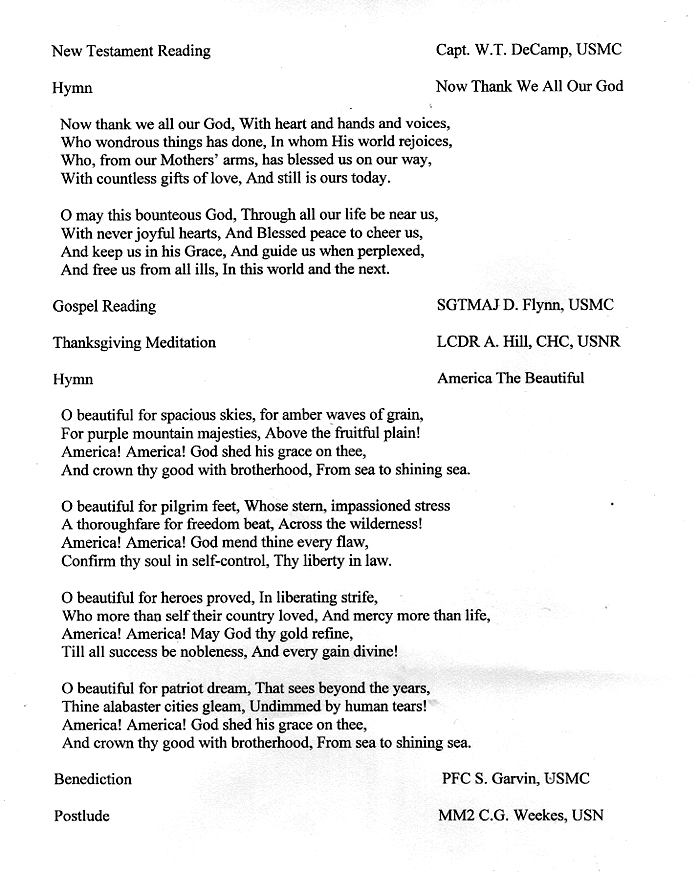 853113
853113 
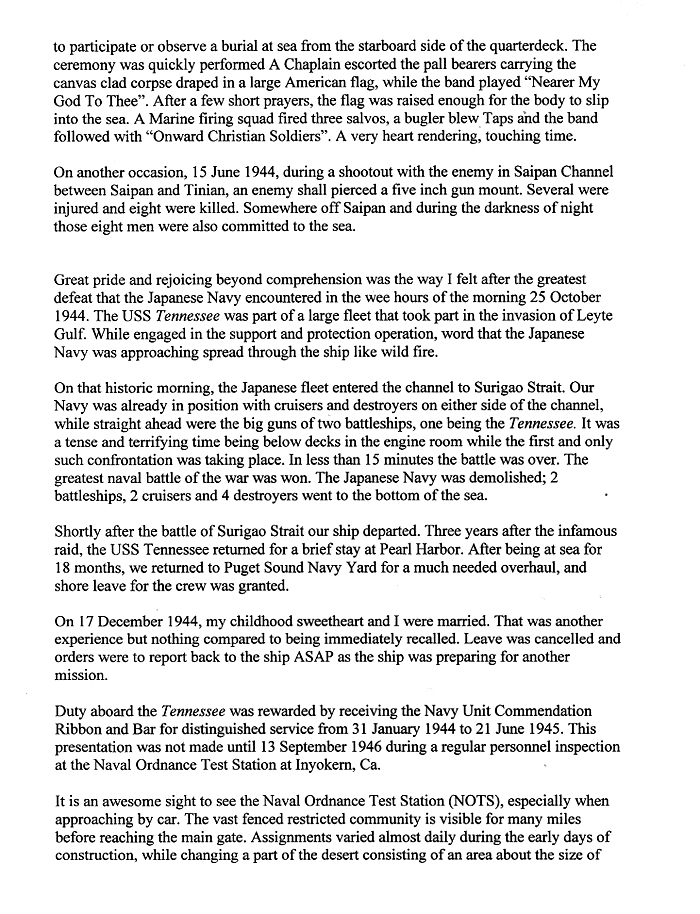
 854814
854814 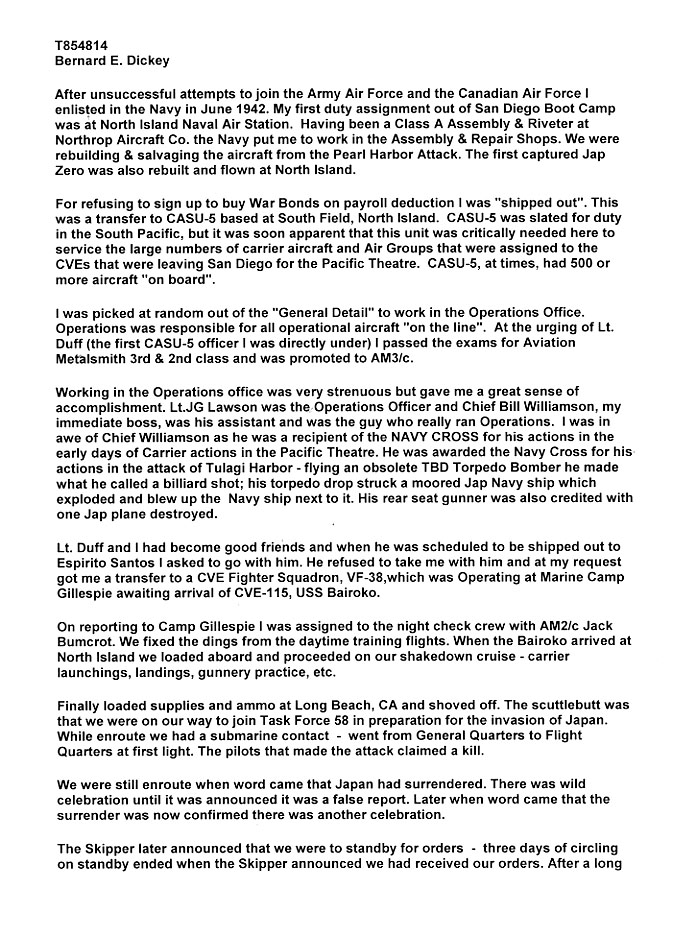
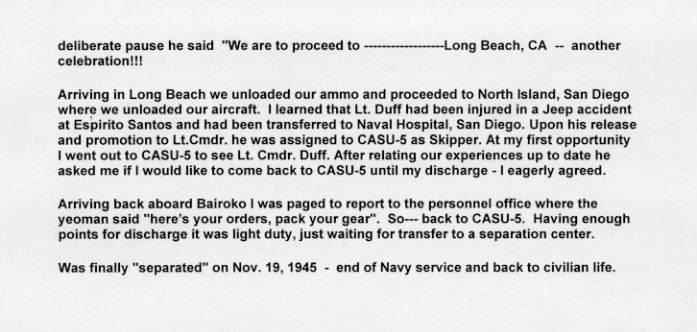 856121
856121 
 856402
856402 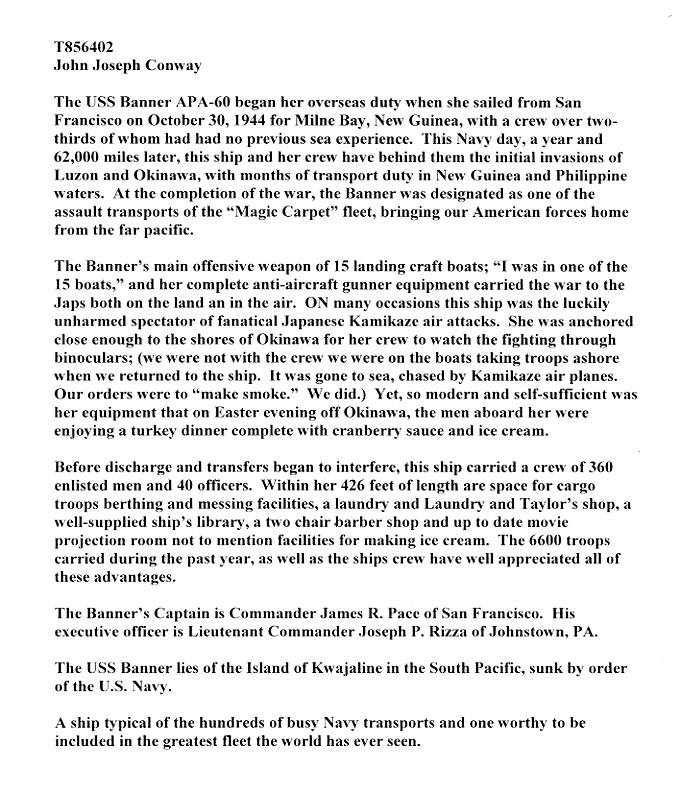 856857
856857 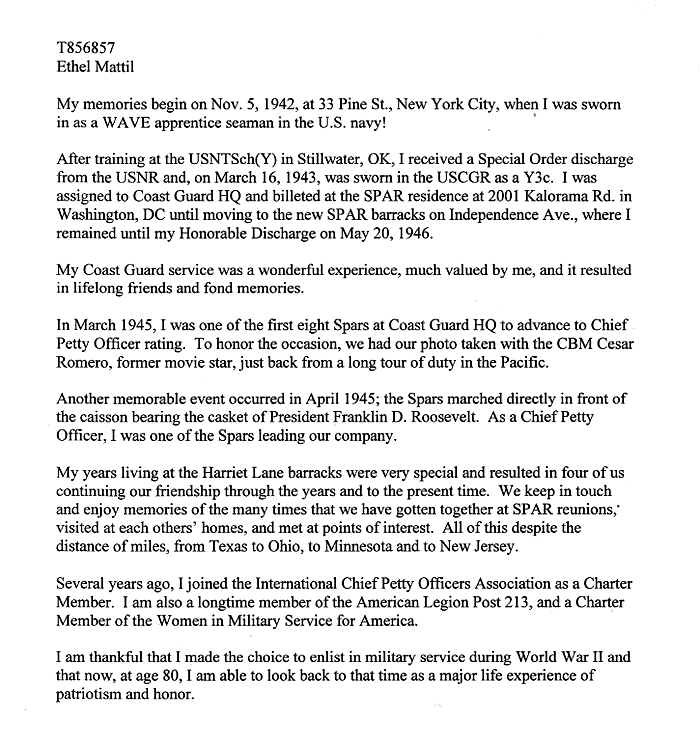 857238
857238 WAS ON CONVOY DUTY FROM PORTLANT, ME TO RUSSIA. REPLACED AN OFFICER ON A DESTROYER ON D-DAY. WAS IN THE MEDITERRANEAN FOR THE AFRICAN CAMPAIGN AND ALSO KOREA
857441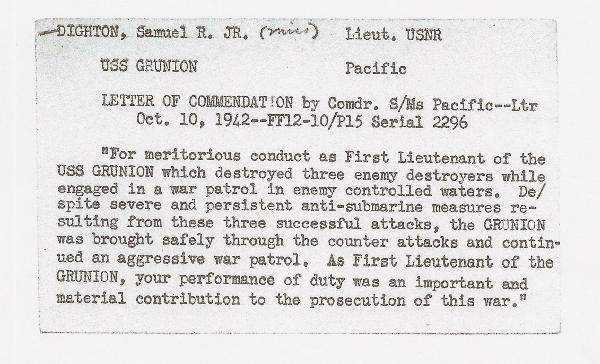 857608
857608  857637
857637 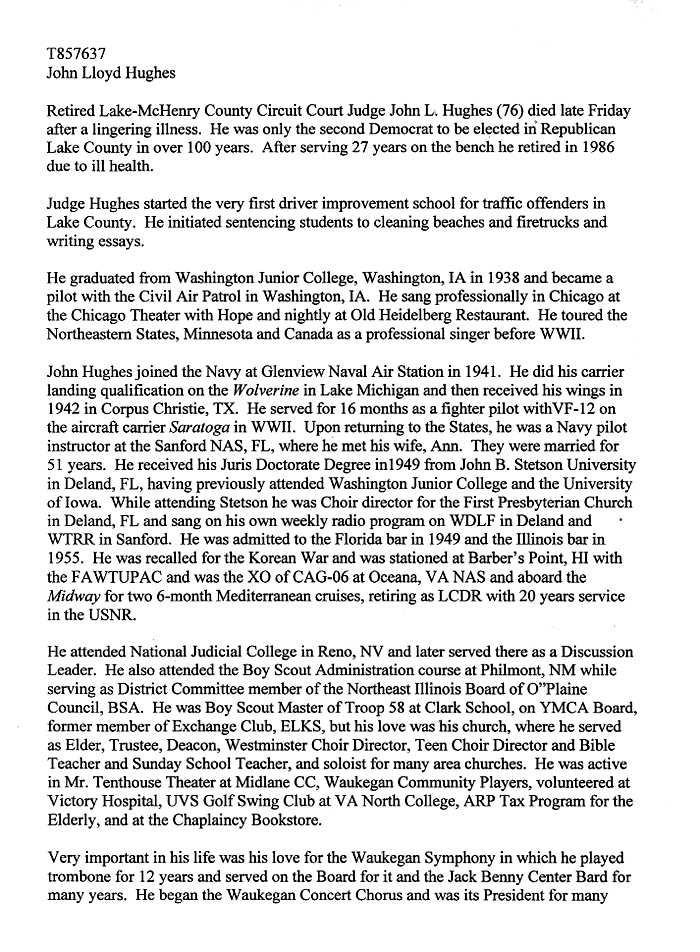
 857661
857661 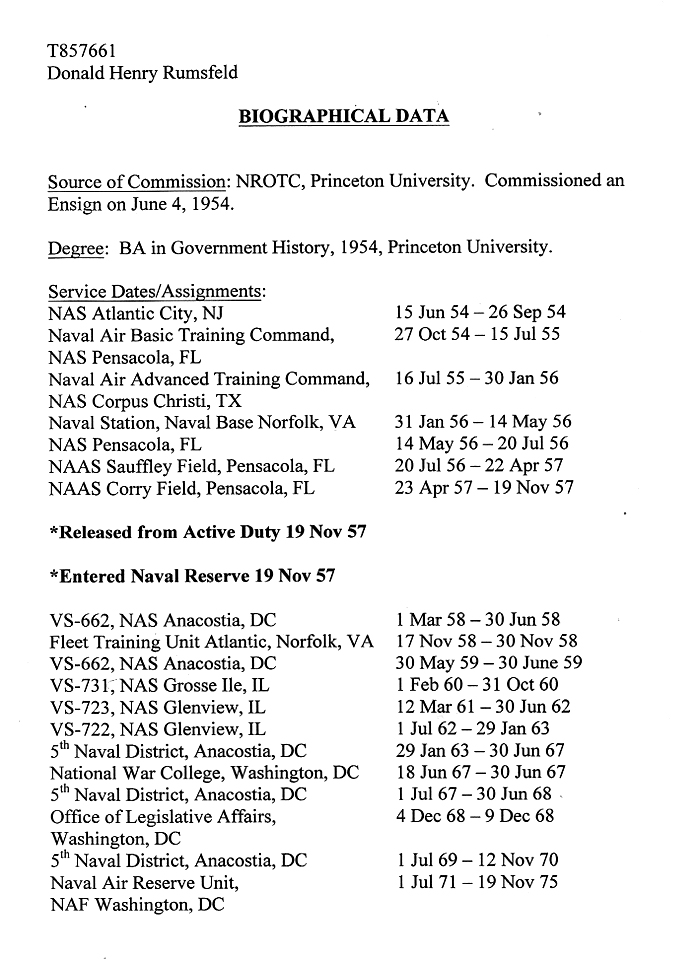
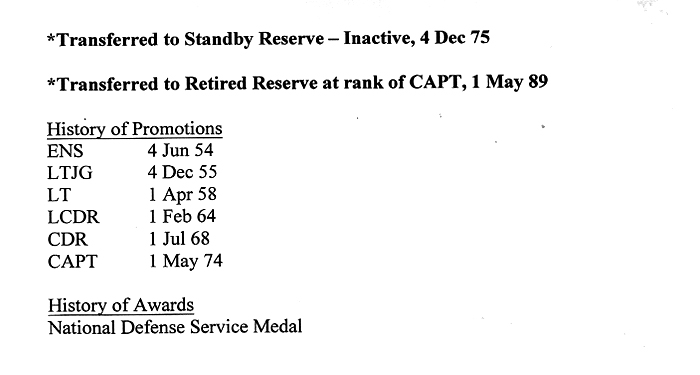 857674
857674 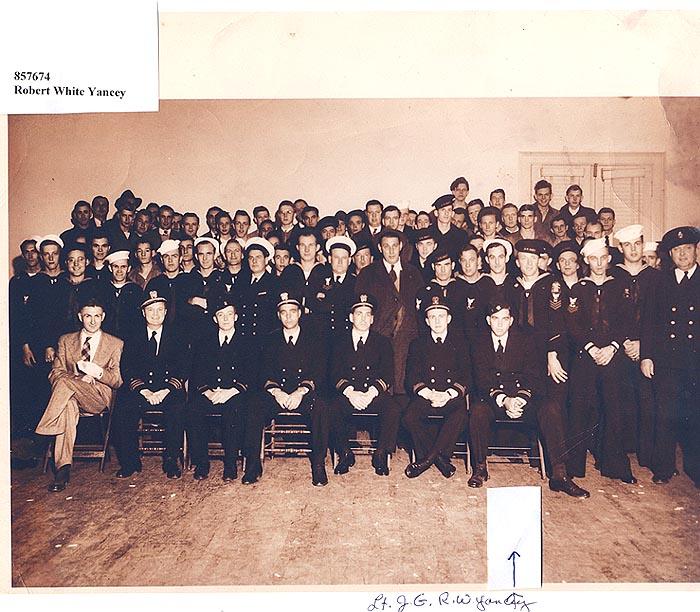
 857802
857802 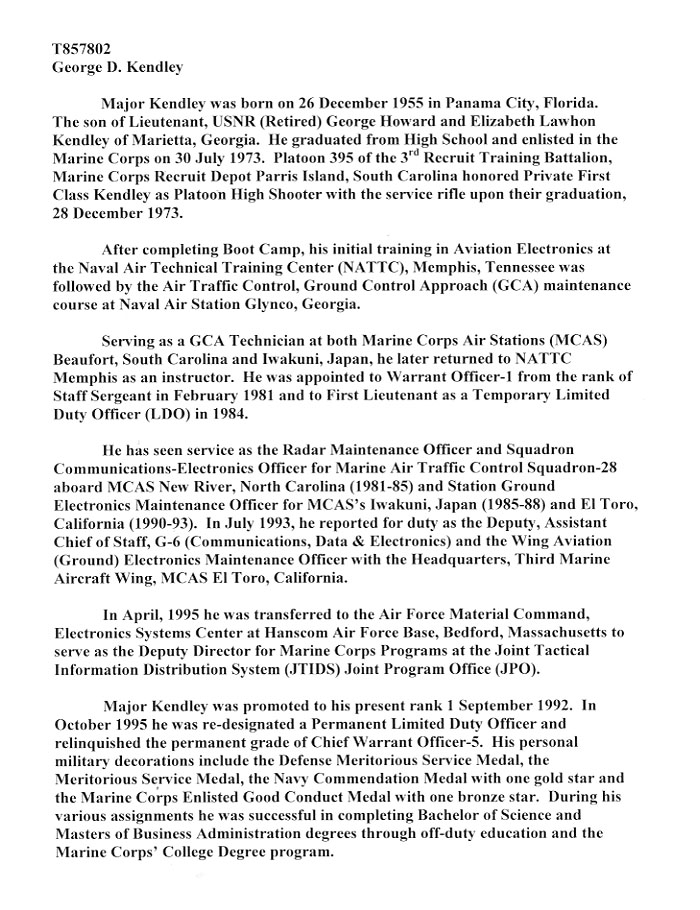 858247
858247 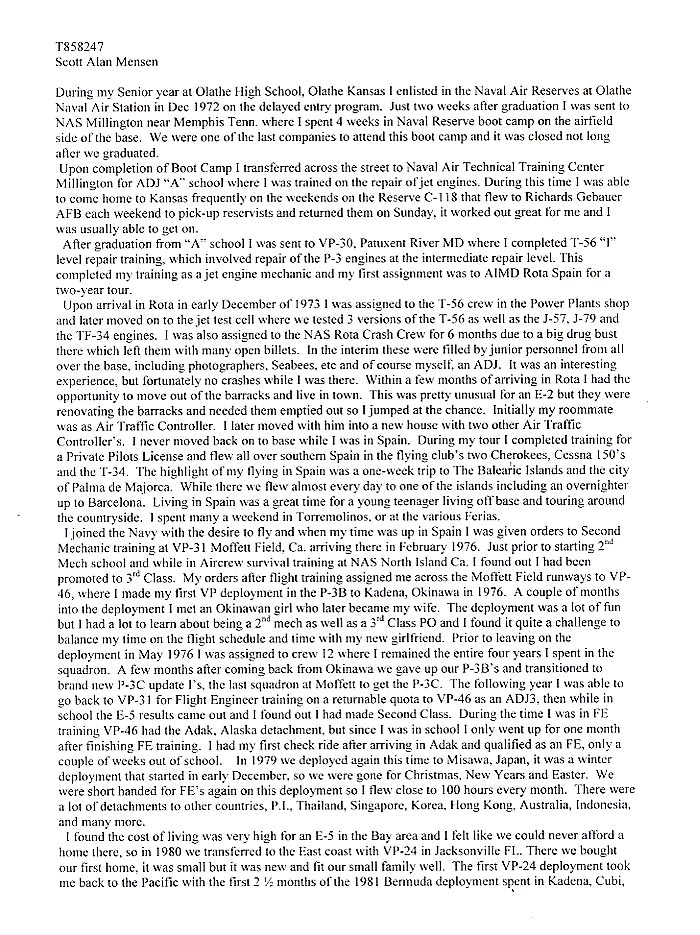

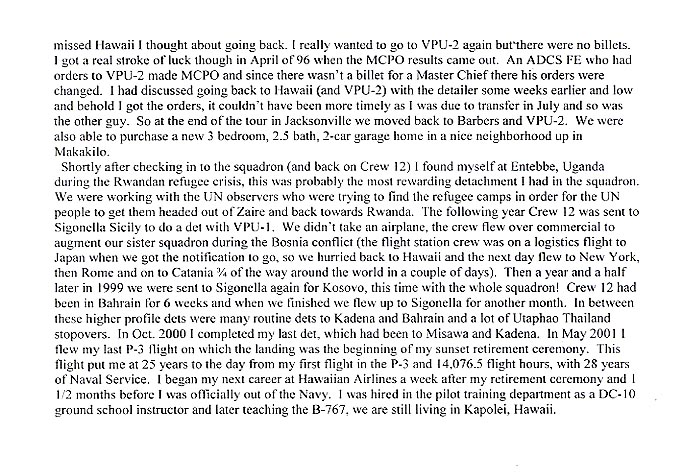 858353
858353 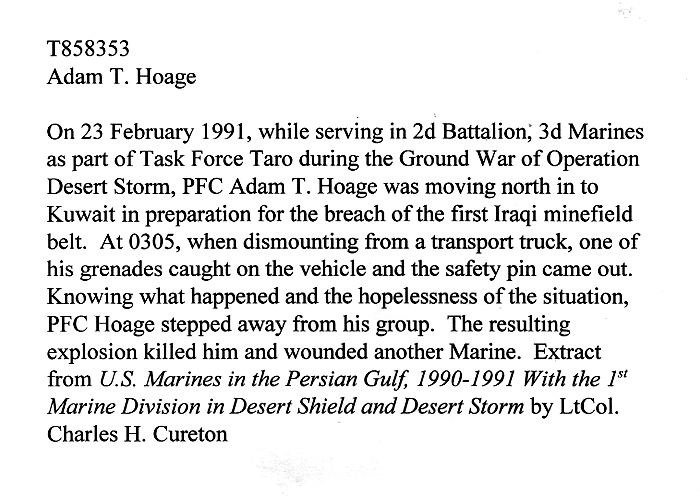 858369
858369 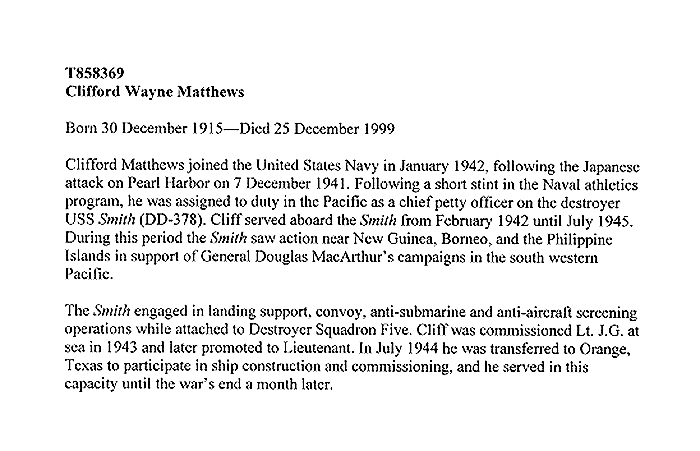 858813
858813 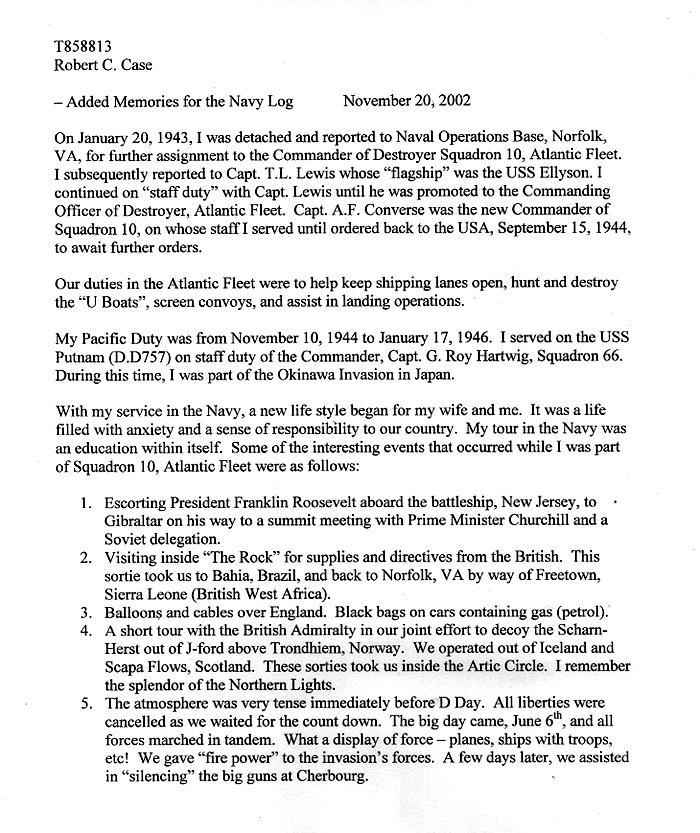 858912
858912 
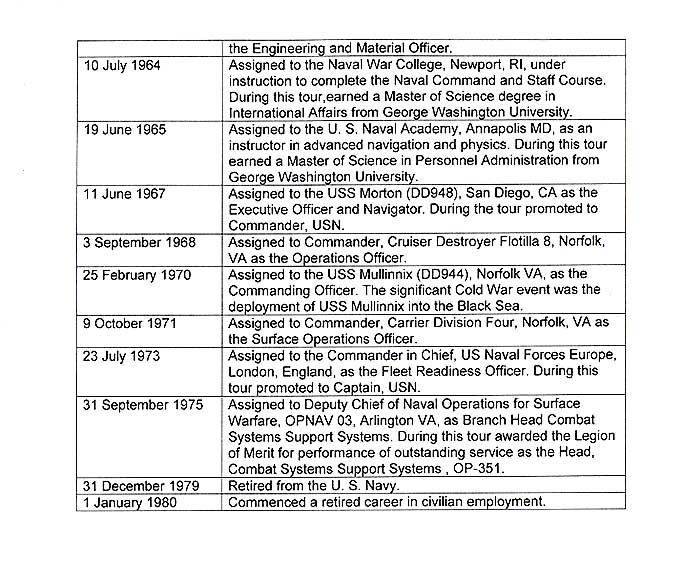 859096
859096  860327
860327 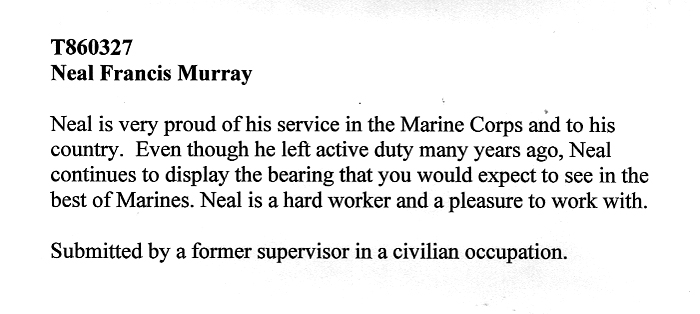 860336
860336 
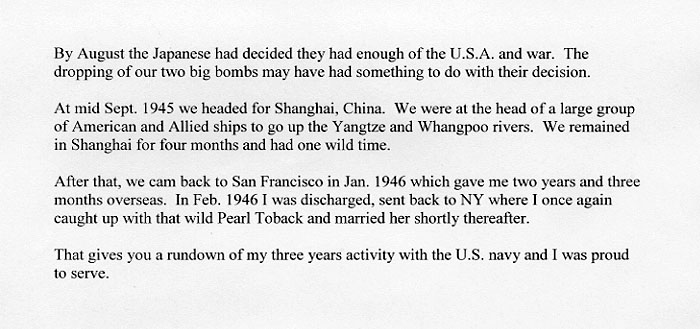 860673
860673  861575
861575 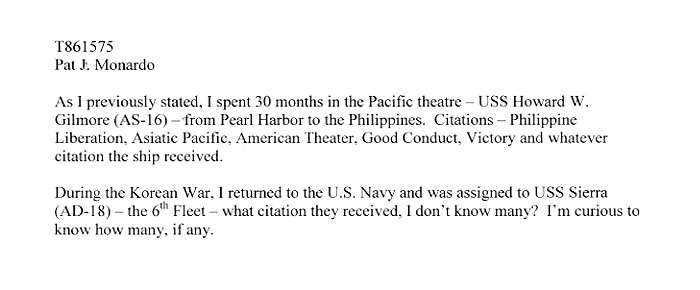 861583
861583 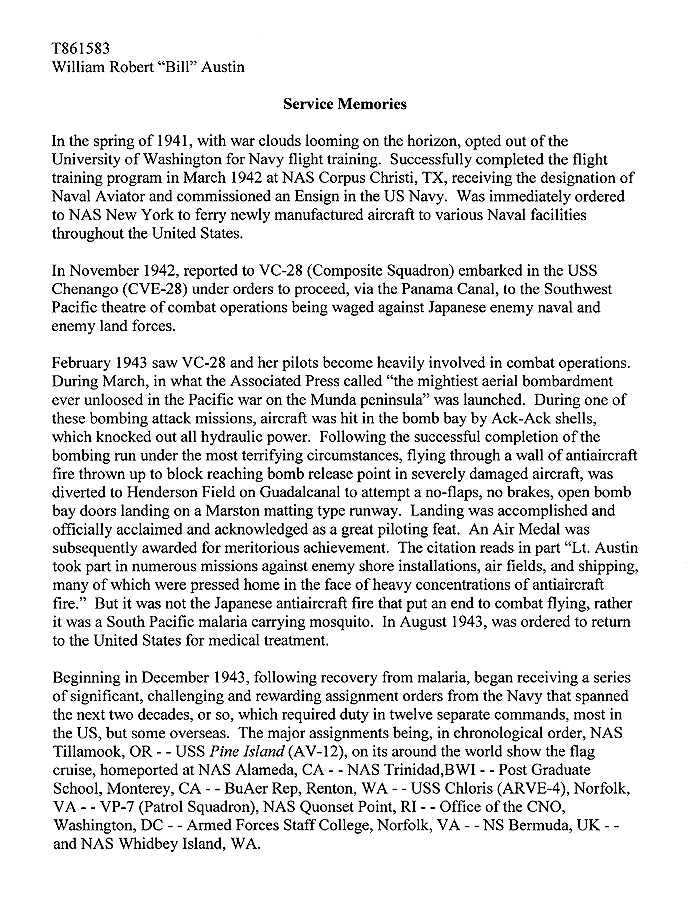
 861807
861807 
 862108
862108 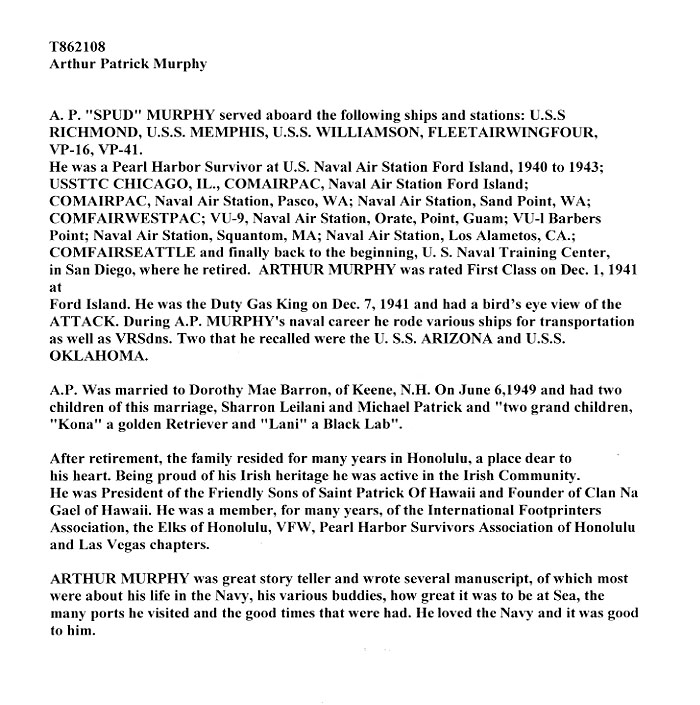 862111
862111 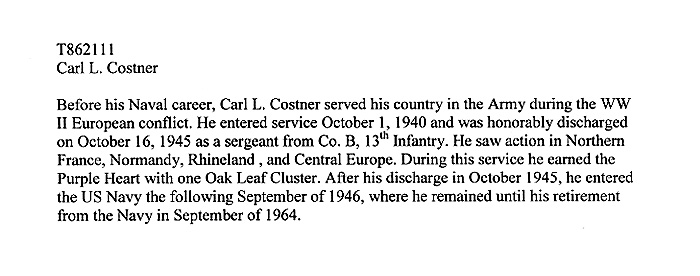 862293
862293 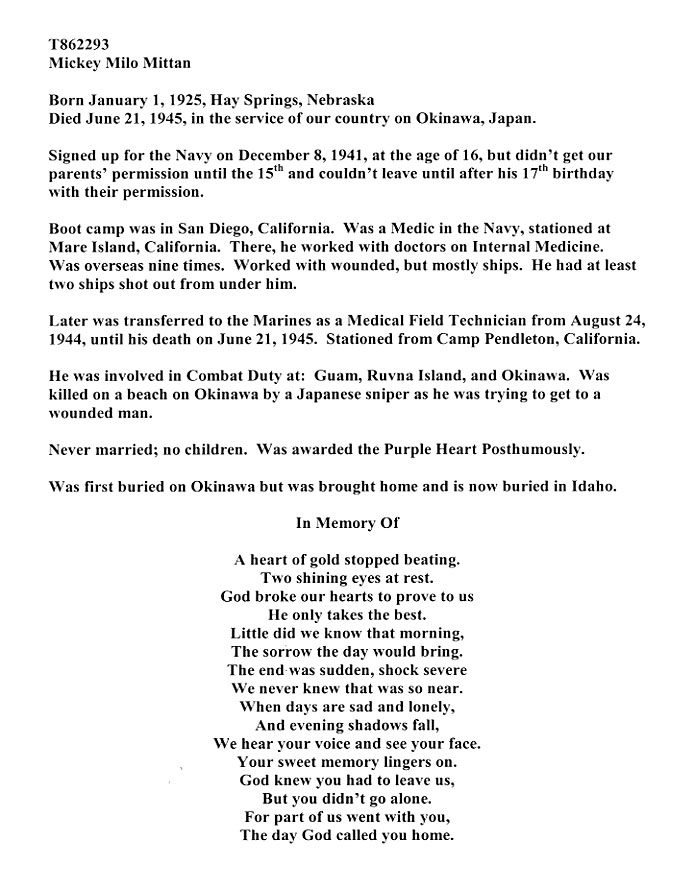 862465
862465  862467
862467  862479
862479  862679
862679  862853
862853  862868
862868 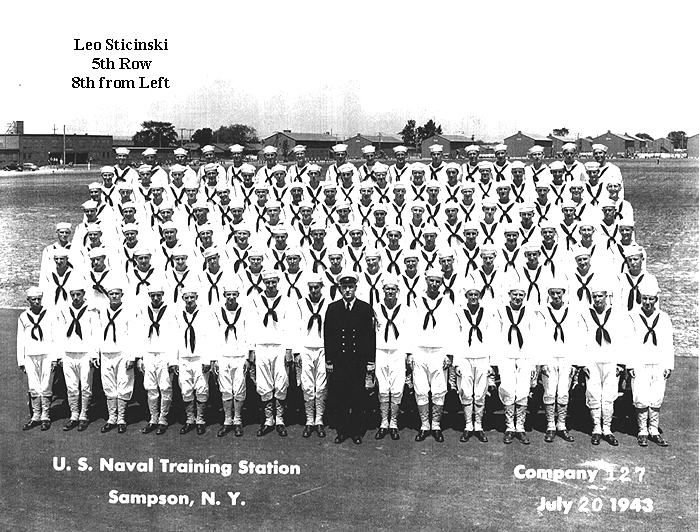 863180
863180  863324
863324  863561
863561 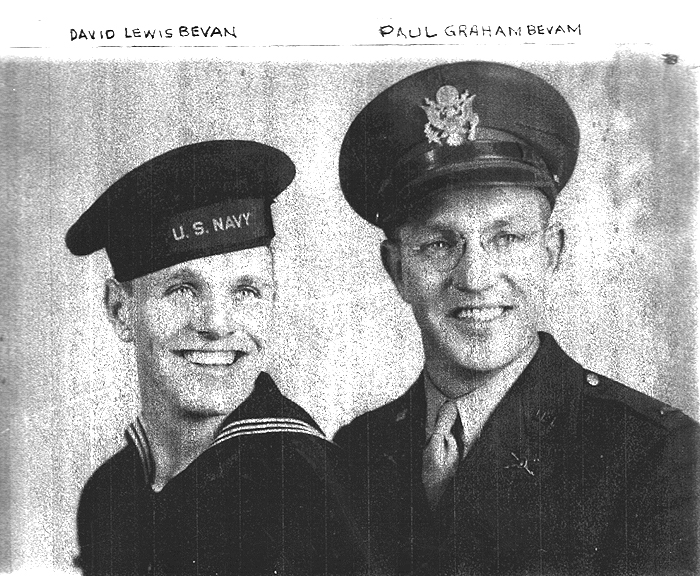 863565
863707
863565
863707 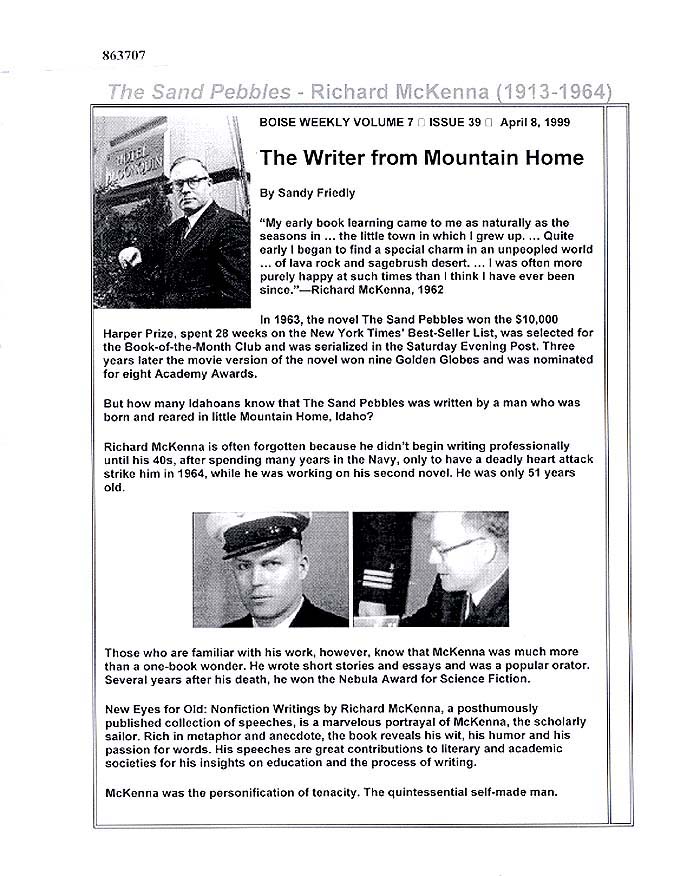
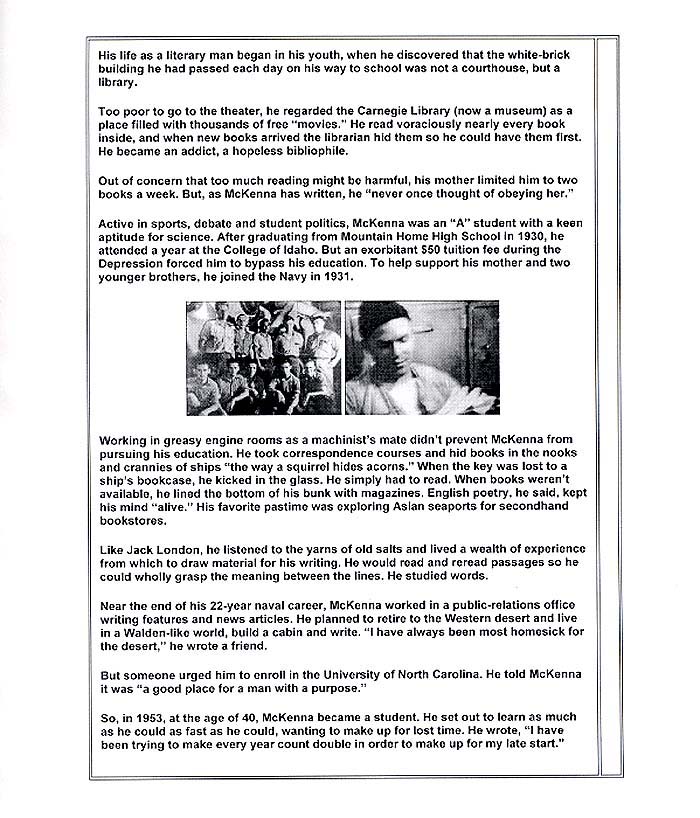
 863716
863716 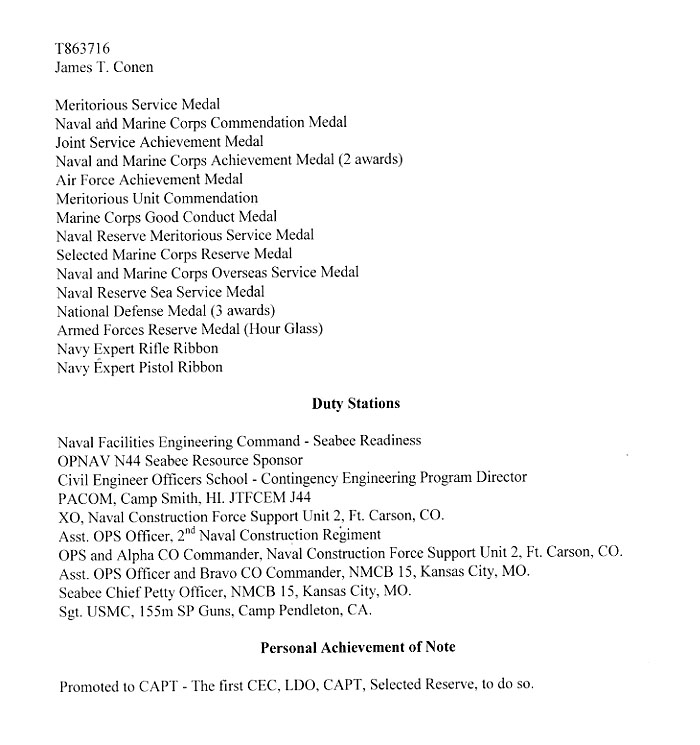 863753
863753 

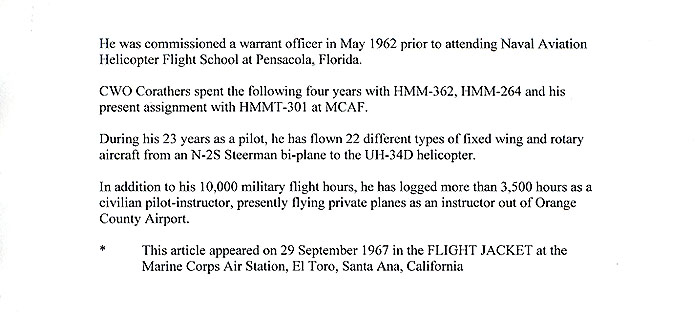

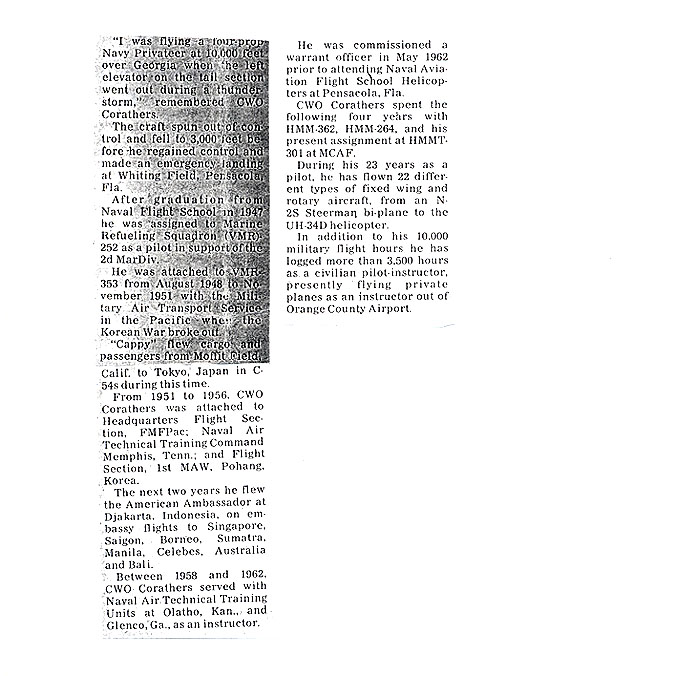 863926
863926 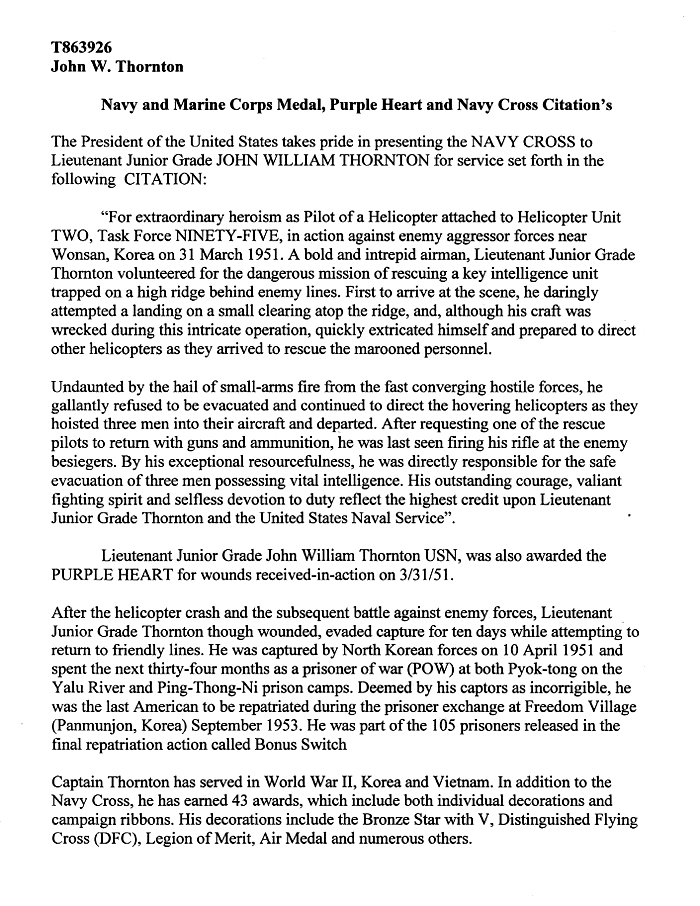
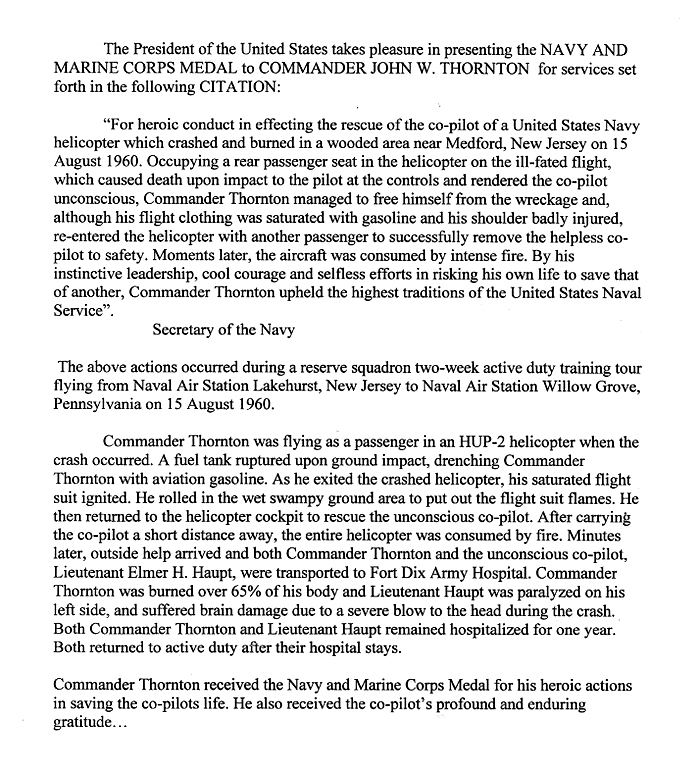 863930
863930 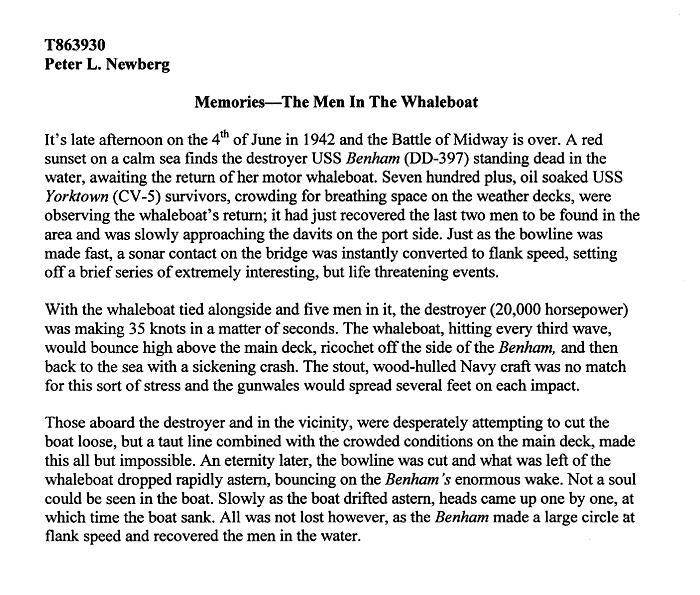 863934
863934  864044
864044 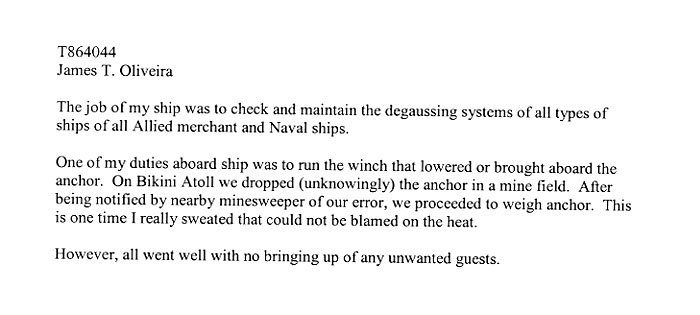 864169
864169 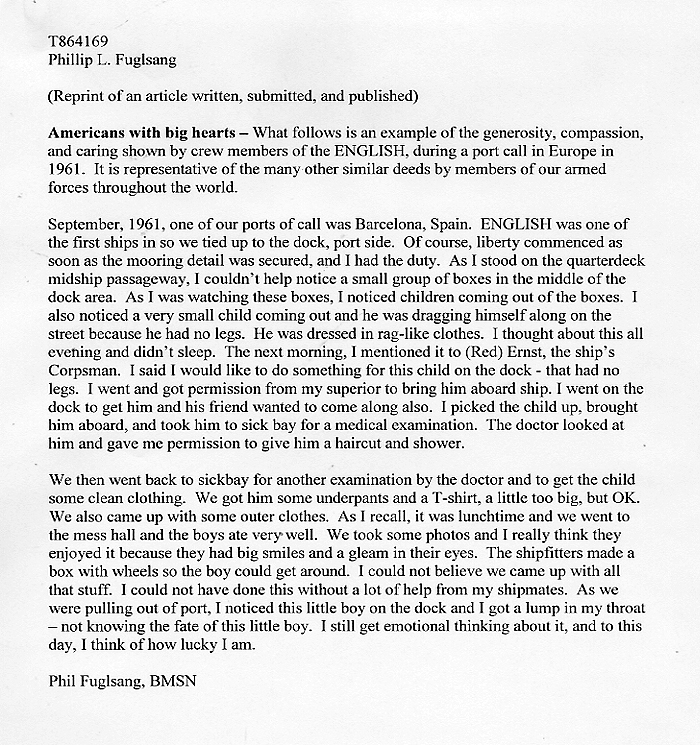 864402
864402 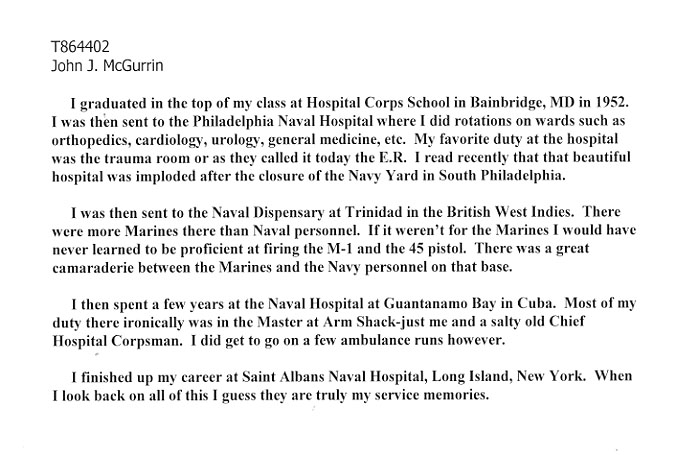 864476
864476 
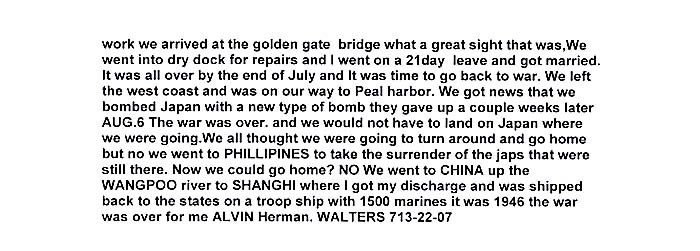 865117
865117 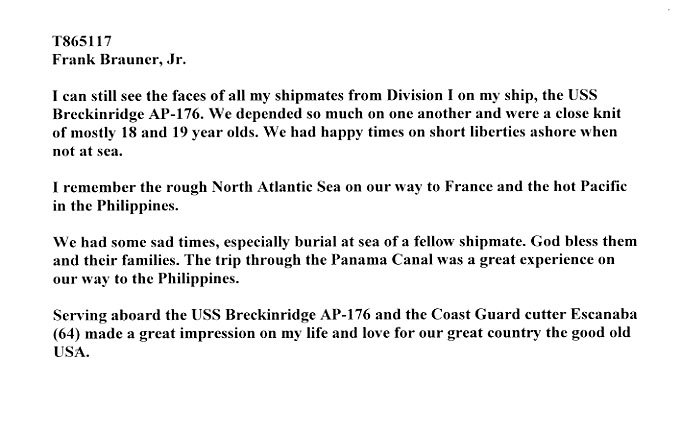 865566
865566  865782
865782 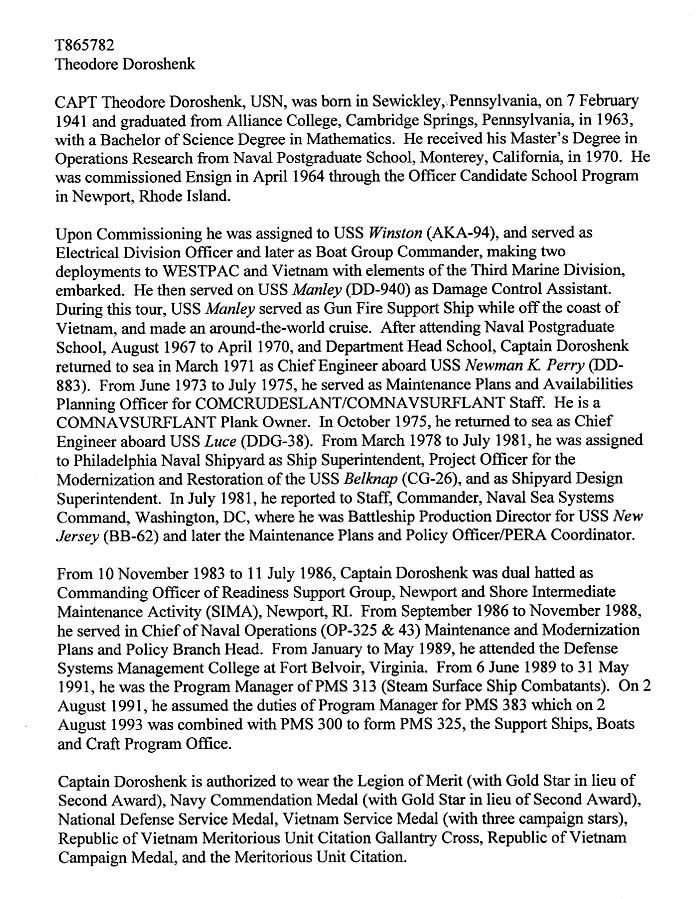 865783
865783 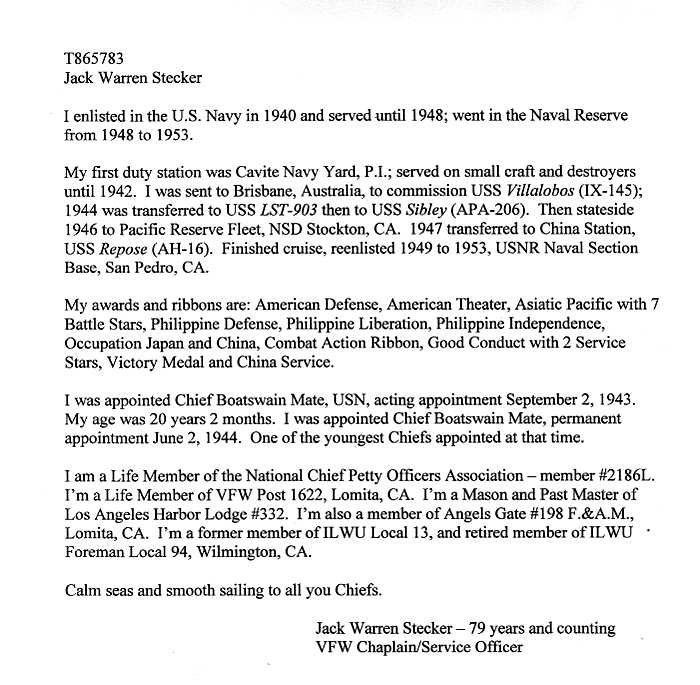 865786
865786 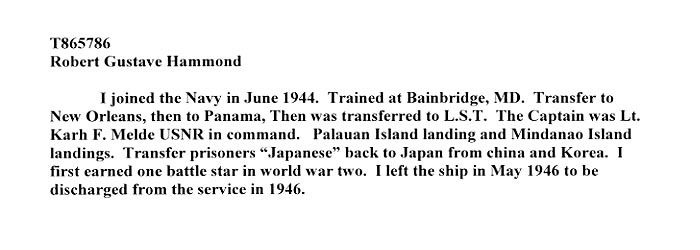 866006
866006
Excerpts from obituary published in San Diego Union-Tribune on June 13, 2012:
William Frank Sullaway, a member of the Greatest Generation, has left us. He passed away peacefully at his home at the age of 90 on June 8, 2012. He proudly served in the US Navy during World War II and the Korean War. In 1944 he was Engineering Officer aboard the Destroyer Escort, USS RAYMOND, which escorted troop ships preparing for the invasion of the Philippines. His ship also escorted carriers that participated in the battles of Iwo Jima and Okinawa. Before his naval service he graduated from the Montana School of Mines and after his Navy service he attended Graduate School at the University of California, Berkeley. He married Margaret Sullaway on June 9, 1951, in San Francisco and they moved to San Diego in 1958 where he opened a one-man office specializing in heating and air-conditioning. By the time he retired in 1989, his contracting business had expanded to a much larger office with many employees. Devoted to his family, he was very involved in the various activities of his children, including sports and Scouting. Three of his sons were Eagle Scouts. He is survived by his wife of 61-years, five children and eleven grandchildren. He is deeply loved and will remain in our hearts forever. Services will be held at All Hallows Catholic Church, La Jolla.
Submitted by CDR Roy A. Mosteller, USNR (Ret)
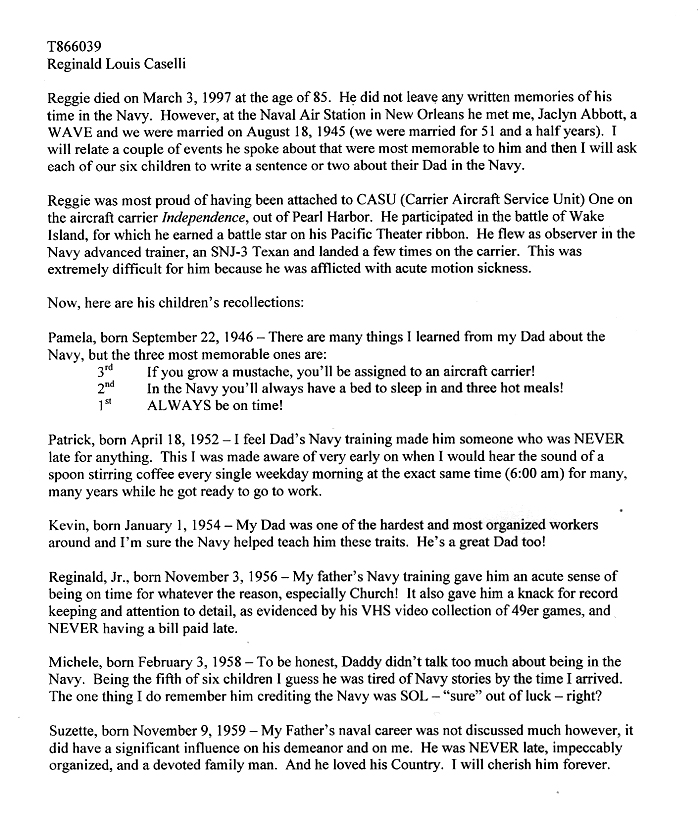 866801
866801 James Wesley Ashby
Date of birth: 2-Apr-44Date of death: June 1, 1967
Home of record: Park Rapids Minnesota
Status: KIA
AWARDS AND CITATIONS
Navy Cross
Awarded for actions during the Vietnam War
The President of the United States of America takes pride in presenting the Navy Cross (Posthumously) to Hospitalman Third Class James Wesley Ashby (NSN: 9140268), United States Navy, for extraordinary heroism on 1 June 1967 while serving as a Corpsman with Company L, Third Battalion, Ninth Marines, THIRD Marine Division (Reinforced), Fleet Marine Force, in the Republic of Vietnam. During a search and destroy operation, Petty Officer Ashby's company came under intense fire from a large, North Vietnamese Army force deeply entrenched in a cleverly-concealed and heavily defended bunker complex, and suffered heavy casualties during the first few minutes of the fierce battle. Responding immediately, Petty Officer Ashby dashed from his position of relative safety and, seemingly impervious to the murderous hostile, automatic-weapons fire sweeping the area, moved through the open terrain, treating and encouraging the wounded. Completely aware of the grave danger involved in remaining in a position exposed to the withering enemy fire, he staunchly refused to seek cover while there were wounded Marines in need of assistance, placing the welfare of his wounded comrades above his own personal safety. As he knelt over a seriously wounded Marine, shielding the Marine with his own body while administering lifesaving first aid, Petty Officer Ashby was mortally wounded by enemy sniper fire. By his inspiring courage in the face of great personal danger, his deep compassion for his comrades-in-arms, his outstanding professional ability, and his unfaltering devotion to duty, he succeeded in saving the lives of many Marines and upheld the highest traditions of the United States Naval Service.
General Orders: Authority: Navy Department Board of Decorations and Medals
Action Date: 1-Jun-67
Service: Navy
Rank: Hospitalman Third Class
Company: Corpsman (Attached), Company L
Battalion: 3d Battalion
Regiment: 9th Marines
Division: 3d Marine Division (Rein.) FMF
SUBMITTED BY DOUG BEWALL RMCM USN RET
867821
Leroy Brantley
Status: KIA
AWARDS AND CITATIONS
Navy Cross
Awarded for actions during the Vietnam War
The President of the United States of America takes pride in presenting the Navy Cross (Posthumously) to Corporal Leroy Brantley (MCSN: 2392215), United States Marine Corps, for extraordinary heroism while serving as a Squad Leader with Company G, Second Battalion, Fifth Marines, FIRST Marine Division (Reinforced), Fleet Marine Force, in the Republic of Vietnam on 28 March 1969. During a search and clear operation in Quang Nam Province, Company G's lead platoon was entering the village of Phu Nhuan when it came under intense rocket and automatic weapons fire from a North Vietnamese Army company occupying well-fortified positions in the village and surrounding tree lines. Reacting instantly Corporal Brantley completely disregarded his own safety as he maneuvered his squad to defilade positions and skillfully directed the delivery of a heavy volume of return fire. Although seriously wounded while deploying his men, he ignored his own painful injury and repeatedly exposed himself to hostile fire as he rallied his men and boldly led them in an assault against the enemy. Wounded a second time by North Vietnamese fire, Corporal Brantley refused medical attention as he valiantly remained with his men to sustain the momentum of the attack. Fearlessly directing the actions of his squad and exhorting them to greater efforts, he continued to brave the intense enemy fire while aggressively leading the advance toward the hostile emplacements until he was struck for the third time by hostile fire. Undaunted by the North Vietnamese rounds impacting near him and weakened by his serious injuries, Corporal Brantley resolutely continued to move his men and direct their actions and, as he boldly pushed through the tree line toward a suspected hostile emplacement, he was mortally wounded. His intrepid fighting spirit and daring initiative inspired all who observed him and contributed significantly to the accomplishment of his unit's mission. By his courage, superb leadership and unwavering devotion to duty, Corporal Brantley upheld the highest traditions of the United States Marine Corps and the United States Naval Service. He gallantly gave his life for his country.
General Orders: Authority: Navy Department Board of Decorations and Medals
Action Date: 28-Mar-69
Service: Marine Corps
Rank: Corporal
Company: Company G
Battalion: 2d Battalion
Regiment: 5th Marines
Division: 1st Marine Division (Rein.) FMF
Submitted by Doug Bewall RMCM USN Ret
868383
Captain
Kenneth Robbins Cameron
Navy
For service as set forth in the following:
CITATION:
The President of the United States of America takes pride in presenting the Navy Cross (Posthumously) to Captain [then Commander] Kenneth Robbins Cameron (NSN: 0-554612), United States Navy, for extraordinary heroism as a Prisoner of War in North Vietnam from 18 May 1967 to 4 October 1970. Under constant pressure from the North Vietnamese in their attempt to gain military information and propaganda material, Captain Cameron experienced severe torture with ropes and by beatings and was kept in solitary confinement. As they persisted in their hostile treatment of him, he continued to resist by feigning sickness and refusing to eat anything but a bare minimum of food. Through those means he was successful in his attempt to keep himself unacceptable in appearance to the North Vietnamese, thus discouraging them from forcing him to meet visiting antiwar delegations for propaganda purposes. He gallantly evaded exploitation by the North Vietnamese throughout his lengthy confinement. By his exceptional courage, determination, and resourcefulness in a most difficult line of resistance, he reflected great credit upon himself and upheld the highest traditions of the United States Naval Service and the United States Armed Forces.
Captain
Kenneth Robbins Cameron
Navy
For service as set forth in the following:
CITATION:
The President of the United States of America takes pride in presenting the Legion of Merit with Combat V (Posthumously) to Captain Kenneth Robbins Cameron (NSN: 0-554612), United States Navy, for exceptionally meritorious conduct in the performance of outstanding services to the Government of the United States while interned as a Prisoner of War in North Vietnam from 18 May 1967 to 4 October 1970. Under the most adverse of conditions, he resisted all attempts by the North Vietnamese to use him in causes detrimental to the United States and his fellow prisoners. Despite the adversities of confinement, he performed such duties and responsibilities as assigned by superiors and required of the Code of Conduct in an exemplary and highly professional manner. Displaying extraordinary courage, resourcefulness, and dedication throughout this period of imprisonment, he reflected great credit upon himself and upheld the highest traditions of the United States Naval Service and the United States Armed Forces. (Captain Cameron is authorized the Combat V.)
Captain
Kenneth Robbins Cameron
Navy
For service as set forth in the following:
CITATION:
The President of the United States of America takes pride in presenting the Distinguished Flying Cross (Posthumously) to Captain [then Commander] Kenneth Robbins Cameron (NSN: 0-554612), United States Navy, for heroism and extraordinary achievement while participating in aerial flight on 12 March 1967 as a jet attack pilot serving with Attack Squadron SEVENTY-SIX (VA-76), embarked in U.S.S. BON HOMME RICHARD (CVA-31), during combat operations in Southeast Asia. As the designated leader of an air wing strike, Captain Cameron planned, coordinated, and led a highly successful bombing attack against the Thanh Hoa Railroad Yards in North Vietnam. He skillfully maneuvered his strike group to avoid the worst of the anti-aircraft fire and, while directing flak-suppression aircraft onto their targets, positioned and led the attack elements in a highly effective dive-bombing attack which inflicted heavy damage to the target. Although subjected to continuous ground fire throughout the approach, attack, and retirement, all aircraft returned undamaged. Captain Cameron's careful planning, superb aerial skill, aggressive leadership, and flexibility in the face of grave danger assured the success of the mission and were in keeping with the highest traditions of the United States Naval Service.
Captain
Kenneth Robbins Cameron
Navy
For service as set forth in the following:
CITATION:
The President of the United States of America takes pleasure in presenting a Gold Star in lieu of a Second Award of the Distinguished Flying Cross to Captain [then Commander] Kenneth Robbins Cameron (NSN: 0-554612), United States Navy, for heroism and extraordinary achievement while participating in aerial flight on 25 April 1967 as a jet attack pilot serving with Attack Squadron SEVENTY-SIX (VA-76), embarked in U.S.S. BON HOMME RICHARD (CVA-31), during action against enemy forces in North Vietnam. As leader of the second element of ten attack aircraft on a major air wing strike against the important Haiphong Ammunition Depot, Captain Cameron participated in a highly successful bombing attack against one of the most heavily defended areas in North Vietnam. Braving numerous surface-to-air missiles and intense and accurate ground fire, he delivered his bombs with extraordinary accuracy, resulting in the destruction of his assigned target. Captain Cameron then led his group safely out of the target area with not damage from the enemy. His inspiring leadership, personal courage, and superb airmanship contributed greatly to the success of the mission and were in keeping with the highest traditions of the United States Naval Service.
Captain
Kenneth Robbins Cameron
Navy
For service as set forth in the following:
CITATION:
Captain Kenneth Robbins Cameron (NSN: 0-554612), United States Navy, was held as a Prisoner of War in North Vietnam from May 18, 1967 until his death in captivity on or about October 4, 1970.
868589
Robert Michael Casey
AWARDS AND CITATIONS
Navy Cross
Awarded for actions during the Vietnam War
The President of the United States of America takes pride in presenting the Navy Cross (Posthumously) to Hospitalman Third Class Robert Michael Casey (NSN: B-111377), United States Navy, for extraordinary heroism on 16 May 1968 while serving as a Corpsman with Company G, Second Battalion, Seventh Marines, FIRST Marine Division (Reinforced), Fleet Marine Force, in connection with operations against the enemy in the Republic of Vietnam. During Operation ALLEN BROOK, Company G was moving through a fortified village in Quang Nam Province to engage an estimated 200 North Vietnamese Army Regulars. Suddenly, the point elements came under heavy enemy fire, sustaining numerous casualties. Petty Officer Casey unhesitatingly moved forward under the intense hostile fire and administered medical aid to one of the wounded Marines. Although wounded himself, he disregarded his own injury as he proceeded to another casualty to render medical treatment. Wounded again while assisting his comrade, Petty Officer Casey steadfastly continued his efforts and moved to the aid of still another casualty, receiving two additional wounds while treating the Marine. When other Marines moved forward to evacuate Petty Officer Casey, he adamantly refused to leave the battle area, stating that he wanted to continue to treat the wounded. After being evacuated to the rear by his companions, he encouraged the casualties around him and provided instructions to others in applying battle dressings. Upon hearing a wounded Marine call for aid, Petty Officer Casey dauntlessly crawled to the man and, while treating his injuries, was mortally wounded. By his unflagging courage, selfless concern for the welfare of his comrades, and unfaltering devotion to duty, Petty Officer Casey upheld the highest traditions of the United States Naval Service.
General Orders: Authority: Navy Department Board of Decorations and Medals
Action Date: 16-May-68
Service: Navy
Rank: Hospitalman Third Class
Company: Corpsman (Attached), Company G
Battalion: 2d Battalion
Regiment: 7th Marines
Division: 1st Marine Division (Rein.) FMF
Submitted by Doug Bewall RMCM USN Ret
869299

Charles Hugh Crawford
AWARDS AND CITATIONS
Navy Cross
Awarded for actions during the Vietnam War
The President of the United States of America takes pride in presenting the Navy Cross (Posthumously) to Hospitalman Third Class Charles Hugh Crawford (NSN: 6874759), United States Navy, for extraordinary heroism on 29 May 1967 while serving as a Corpsman with Company M, Third Battalion, Fourth Marines, THIRD Marine Division (Reinforced), Fleet Marine Force, during Operation PRAIRIE IV against elements of the North Vietnamese Army in Quang Tri Province, Republic of Vietnam. While attacking the heavily fortified enemy bunker complex on Hill 174, the lead elements of Company M were pinned down by a heavy volume of automatic-weapons fire delivered from well-prepared enemy positions, and sustained numerous Marine casualties in the initial stage of the battle. Despite the concentrated fire which made it virtually impossible to reach the wounded who were trapped only a few feet from the main enemy bunker, Petty Officer Crawford immediately ran through the deadly hail of enemy fire to reach his injured comrades. After administering first aid to the most seriously wounded Marine, and while moving the casualty to a relatively safe area, Petty Officer Crawford himself was fatally wounded. Through his fearless courage and uncommon concern for his comrades, he inspired the other Marines, and undoubtedly saved the life of the wounded Marine he treated. Petty Officer Crawford's daring actions and unswerving devotion to duty were in keeping with the highest traditions of the United States Naval Service.
General Orders: Authority: Navy Department Board of Decorations and Medals
Action Date: 29-May-67
Service: Navy
Rank: Hospitalman Third Class
Company: Corpsman (Attached), Company M
Battalion: 3d Battalion
Regiment: 4th Marines
Division: 3d Marine Division (Rein.) FMF
Submitted by Doug Bewall RMCM USN Ret
869383
James Dale Cruse
AWARDS AND CITATIONS
Navy Cross
Awarded for actions during the Vietnam War
The President of the United States of America takes pride in presenting the Navy Cross (Posthumously) to Hospitalman James Dale Cruse (NSN: 1392506), United States Navy, for extraordinary heroism in action on 15 June 1968 while serving as a Corpsman with Company M, Third Battalion, Fourth Marines, THIRD Marine Division (Reinforced), Fleet Marine Force, in connection with operations against enemy aggressor forces in the Republic of Vietnam. Hospitalman Cruse's platoon was conducting a search and destroy operation near the Khe Sanh Combat base when the platoon suddenly came under intense automatic-weapons fire from a large North Vietnamese Army Force. During the initial moments of the fire fight, lead elements of the platoon were pinned down in an open area, and the two point men were seriously wounded. Disregarding his own safety, Hospitalman Cruse unhesitatingly advanced from his position of relative safety and maneuvered across the fire-swept terrain to assist his injured comrades. Upon reaching the first casualty, he efficiently rendered medical aid and spoke words of comfort and encouragement before moving forward to the other Marine casualty who lay exposed to enemy fire. While treating and comforting the second wounded Marine, Hospitalman Cruse was himself mortally wounded. By his courage, bold initiative, and selfless devotion to duty, he served to inspire all who observed him and upheld the highest traditions of the United States Naval Service.
General Orders: Authority: Navy Department Board of Decorations and Medals
Action Date: 15-Jun-68
Service: Navy
Rank: Hospitalman
Company: Corpsman (Attached), Company M
Battalion: 3d Battalion
Regiment: 4th Marines
Division: 3d Marine Division (Rein.) FMF
Submitted by Doug Bewall RMCM USN Ret
869861
Edward Andrew Dickson
Date of birth: September 3, 1937Date of death: MIA: February 7, 1965
Burial location: Honolulu, HI
Home of record: Wyoming Pennsylvania
Status: MIA
Edward Dickson was listed as Missing in Action after the action that earned him the Navy Cross on February 7, 1965. His remains have never been recovered.
AWARDS AND CITATIONS
Navy Cross
Awarded for actions during the Vietnam War
The President of the United States of America takes pride in presenting the Navy Cross (Posthumously) to Lieutenant Edward Andrew Dickson (NSN: 0-646194), United States Naval Reserve, for extraordinary heroism on 7 February 1965 while serving as a jet attack Pilot with Attack Squadron ONE HUNDRED FIFTY-FIVE (VA-155), aboard the U.S.S. CORAL SEA (CVA-43), during a retaliatory air strike against the Dong Hoi Army Barracks and staging area in North Vietnam. When his aircraft was struck by intense enemy anti-aircraft fire on the low-level run-in to the target area burst into flame, Lieutenant Dickson elected to remain with his burning aircraft until he had released his bombs on the target area. Following his attack, he headed toward the sea where he ejected from his flaming aircraft. By his inspiring and courageous devotion to duty, Lieutenant Dickson upheld the finest traditions of the United States Naval Service.
General Orders: Authority: Navy Department Board of Decorations and Medals
Action Date: February 7, 1965
Service: Navy
Rank: Lieutenant
Company: Attack Squadron 155 (VA-155)
Division: U.S.S. Coral Sea (CVA-43)
Submitted by Doug Bewall RMCM USN Ret
870771
On 26 October 1966 USS ORISKANY CVA-34 endured a major shipboard fire which killed 44 officers and crewmen and injured many more. At 0728 26 October fire broke out in a forward magazine and raged through 5 decks. Many of those killed were veteran combat pilots who, a few hours earlier, had flown on raids over Vietnam. The fire started when a magnesium flare ignited in a ready ammo locker near frame 44 in the forward section of the ship. Shipboard fires are not uncommon, and ORISKANY's crew responded promptly and properly to this one. However, the primary firefighting tool available in the magazine area was an inexhaustable supply of salt water - but water alone cannot extinguish magnesium fires. The heat of the flare ignited other ordnance, including 5 ZUNI rocket warheads. Heavy, incapacitating smoke was rapidly drawn into the ship's ventilation system, while fireballs from exploding ordnance ignited secondary fires among fully fueled aircraft in Hangar Bay 1. The combination of toxic smoke and scattered secondary fires blocked passageways and caused numerous casualties. The Air Wing's officers were particularly vulnerable, since many of them occupied quarters in the immediate vicinity of the fires and were unable to escape to the hangar bays or flight deck. LCDR Ford was one of the officers who lost his life. He was buried at sea with many of his shipmates. The ship steamed to Subic Bay in the Philippines for temporary repairs before continuing on to the United States for permanent repairs. Eight months later she was again conducting operations off North Vietnam.

